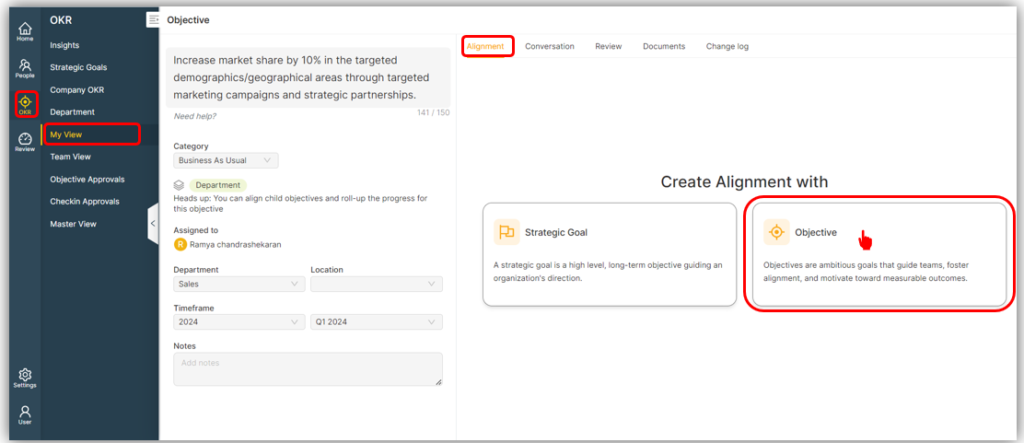What Are OKR Alignments?
OKR alignments are a key aspect of the objectives and key results (OKRs) framework, providing a powerful mechanism for ensuring strategic alignment at various levels of an organization. By aligning objectives at the individual, team, and organizational levels, OKRs help unify efforts toward achieving meaningful results.
Here’s how it typically works:
- Company-Level Alignment: Initially, top-level management or the CEO sets the company’s OKRs for a specific quarter or period. These company-level objectives serve as the guiding North Star.
- Team-Level Alignment: Teams then formulate their own objectives, aligning them with the company objectives by outlining how their department’s efforts contribute to the overarching company objectives.
- Individual Alignment: If desired, these department objectives can be further cascaded down to the individual level. This alignment ensures that every employee’s OKRs are connected to the broader company goals.
The primary goal of alignment is to harmonize and synchronize the collective efforts of the organization toward common objectives.
We have two main approaches for aligning your OKRs:
- Top-Down Alignment: Assigning key results as objectives or sub-key results to individuals or teams. This prioritizes the assigned objectives or key results for the assignees.

In the example above, there are two ways to facilitate alignment within the OKR framework:
- Creating Child Objectives: You can establish child objectives under a parent objective. This hierarchical structure allows you to break down broader objectives into smaller, more manageable components. Each child objective can be assigned to specific individuals or teams, ensuring clarity in ownership and responsibility.

These alignment strategies provide flexibility in how you structure and assign objectives and key results, allowing you to adapt to the unique needs and dynamics of your organization.
- Bottom-Up Alignment: Acknowledging that valuable insights and ideas can come from individual contributors throughout the organization. Encouraging their input adds an extra layer of engagement and commitment to achieving OKRs

In some instances, top-level executives, such as C-level executives, set their corporate-level objectives and grant department heads the authority to develop their initiatives and align them with the corporate objective to drive progress.
For example, John, the CEO, aims to elevate the marketing team to new heights. He has established an objective titled “Elevating Customer Engagement & Satisfaction to New Heights.” John has empowered the Marketing team to devise their own objectives that will drive the desired transformation.
Alignment in OKRs serves as a vital tool to foster collaboration, keep everyone focused on strategic priorities, and drive the organization toward success.






